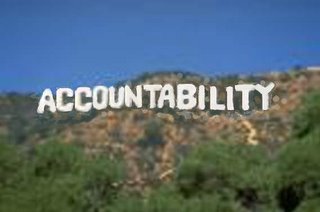Cities in transition....
 Porches on Baltimore Rowhouses, at RandiArt Monday and Tuesday I made a business trip to Baltimore. I don't quite remember the last time I visited that city, but I do remember quite clearly the first time. It was 1988, and our daughter, Heather, had opted for attending Johns Hopkins University. We made the long trek from Kansas to drop her off, and dutifully followed the directions provided by the University. Coming into Baltimore through its city center in those days was a bit of a shock, especially if you were coming from one of those picturesque university towns in the American midwest. The fact that the driving instructions put you right through the worst parts of this bleak looking city (or at least, what was then a bleak looking city) just added to our anxiety. As it turned out, we were getting our first taste of Baltimore just at the time when the city was completing its first steps in an urban reemergence that is still in process. The now famous Inner Harbor shopping area was just starting to attract increasing numbers of people to the central city area, and the Camden Yards baseball stadium was nearing completion. But clearly there was much yet to be done to make the city look and feel safe enough for those of us who were depositing our children there for a four-year stay. About the same time, however, we were beginning our own move to the East Coast. I had taken a position in New York, and about a year and a half later Randi was able to land a position in the Princeton area. During this time we had grown more familiar with the Baltimore area as we made infrequent trips down to visit our daughter who was becoming increasingly comfortable with Hopkins and its "Homewood" surroundings. After graduation she headed to graduate school in Atlanta, but soon found herself visiting friends in Baltimore with such frequency that eventually she decided to make the move back to Hopkins where she would eventually complete her doctorate course work. She left Baltimore and moved to the Boston area in 1997, but seemed to always have a strong attachment to the area. As for me, the only times I really saw Baltimore during most of the 90s was from the window of an Amtrak train during my infrequent journeys between Washington and the New York/Boston area. (And, of course, there was the image of Baltimore or that was always on the TV screen -- at first in the superb police drama, "Homicide: Life on the Street", and more recently the Baltimore dramatized in HBO's "The Wire". While neither show seems to do justice to what I know about Baltimore, in fact they do reflect a real crime issue that has yet to be solved. Besides, they sure were damn good shows....) When I flew into BWI Airport on Monday morning and took a taxi to the area around the "arts district" near the Lyric Opera and Symphony Hall, it was immediately evident that Baltimore had successfully transformed itself, and was still engaged in efforts to overcome its old image and reputation as a bleak industrial 19th-century city. As I wandered around the area in the morning, during breaks in meeting times during the day, and on Monday evening, I was impressed by the number of stores, coffee shops, neighborhood pubs, and upscale restaurants that I passed -- all along a route that I recalled as pretty dismal little more than 15 years earlier. I've been lucky enough to live and work in a number of cities that have gone through significant changes over the years -- lucky in the sense of being able to see how bleakness can be overcome. As I walked around Baltimore, was also thinking about what I've seen take place in Belfast in the short period of 18 months that I've lived in that city. People there have described to me how vastly different things have been since the signing of the Good Friday Agreement in 1998, and there's pretty good physical evidence that the city must've been a glorious thing to behold in the years before economic downturns and the Troubles took their toll. But just in the area near where I reside along Lisburn Road, you can see month-to-month changes as old buildings become renovated and empty lots become office and modern shopping spaces. Compared to both Baltimore and Belfast, Newark (where I work when I am in the United States) has not quite reached the point where you can say that it as reemerged as a vibrant urban center. But there are pretty positive signs, and one can hope that the effort will continue long enough to achieve what I think these other cities have. As I mentioned in previous blogs (when reflecting on Philip Roth's The Plot Against America), I actually lived in Newark when I was young and when the city will was still economically thriving. As you walk or drive around the city and look at the remnants of some of the wonderful architecture and landscaping, you begin to appreciate just what Newark was like as late as the early 1960s. One of the attractions of Roth's work is how he describes the neighborhoods he grew up in -- neighborhoods that are still thriving, but often with the wrong kind of development. So although Newark's progress seems slower than some other cities, for me the lessons of Baltimore and Belfast bode well for the possibility that it might be able to recapture some of its past urban glory.... cities |
Read more!










